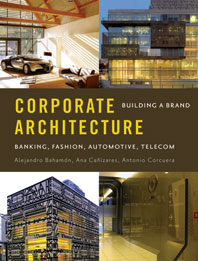The cluster of corporate pavilions at the Expo could be mistaken for a light show. Buildings like the Oil Pavilion and the State Grid Pavilion are innocent enough by day, but by night their facades radiate in an ever-changing pattern of light and image. In this battle of “look-at-me” projects, it’s difficult to focus on any one.
The Shanghai Corporate Pavilion, also known as the “Dream Cube,” is a light box with a difference. Unlike its neighbors, whose closed skins wrap around their boxy frames, the Dream Cube stands as an open construction of transparent plastic rods projecting from a steel frame. The porous grid of rods, with integral computer-controlled LEDs, allows visitors to see an exhibition hall and theater seemingly floating inside. These two rounded white volumes present organic counterpoints to the building’s rectilinear frame.
The pavilion, though, has more than just a pretty face. Architect Yung Ho Chang, founder of Atelier Feichang Jianzhu, employs a number of eco-friendly strategies: old music CDs recycled into the light tubes, a mechanical system that reuses rainwater to cool the building, and a 1,000-square-meter solar-heat-collecting tube screen. Sustainability serves as a key message for exhibitions in the pavilion and films presented in its 360-degree theater. It’s not clear how green the project truly is (one wonders how much of the harvested energy is used for the building’s numerous spotlights and mega-volume speakers). But the attempt to include green technologies and teach green ideals makes the project stand out from the crowd.





Post a comment to this article
Report Abusive Comment